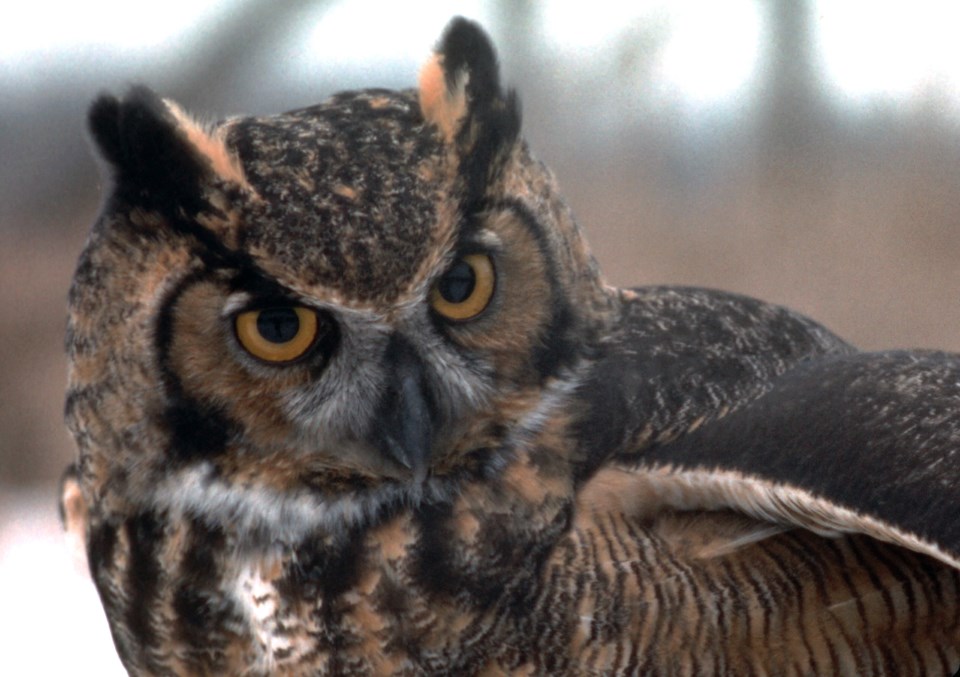It seems fitting that the winter solstice that marked the lengthening of daylight hours coincided with this extended thaw. Within the big cycle of life, certain things happen in winter, whether or not the snowdrifts are piled over your car or barely over your boot-tops.
Although the hibernating critters are in snooze mode until March comes blustering in, the winter-hardy birds are having a great time as weed seeds are abundant and easy to access.
Roadside ditches have small clusters of common redpolls, goldfinches and chickadees feeding around the weathered remains of primrose and dock. Downy woodpeckers are hammering open goldenrod galls, searching for the fly larva tucked inside.
As the daylight hours lengthen with each rotation of the Earth (an event that biologists call 'photoperiod'), members of the animal kingdom start to change their behaviours. The added minutes of available sunlight trigger reactions, and for many species the mating season begins once again.
Red foxes are ranging widely these days and nights, as males roam the countryside looking for available females.
When the rabies virus was prevalent in the 1960s and '70s this was a time of worry, as an infected male fox could cover 15 to 20 kilometres in a night, potentially spreading fox-strain rabies to every cow, horse, cat, dog and fox it encountered. Thankfully, this disease has all but disappeared for the time being.
Within the woodlots, especially the large hardwood stands near swamps, will soon be heard the mating and territorial calls of owls.
January is when the great horned owl starts its breeding cycle, and loud hoots will be heard echoing in the evening as boundaries are established between territories.
If you can find an old crow or hawk nest (now visible as the leaves are down), look closely as it may be inhabited by a great horned owl. Incubation takes place in February, so egg laying starts soon after the territory has been established.
By the time the owlets leave the nest in March, it will once again be available to the returning crow or hawk if they so desire it — the original model of timeshare!
Another owl that is fairly easy to hear is the barred owl. These birds tend to stay within the confines of a balsam fir or cedar swamp, so it's unlikely to see one in a hardwood forest. And because the evergreen boughs are such a good screen you have to look extra close to see a barred owl.
But their calls are unmistakable, and it's easy to get them to call back to you. It sounds as if they are calling, "Who, who, who-cooks-for-you-all". It is a very nasal sound, with a drawn out "all-l-l-l" at the conclusion. Try it from a roadside near a big conifer swamp (but maybe practise by yourself for a while first!).
Just ending their mating season are the white-tailed deer. The bucks are shedding their antlers and taking a bit of time off from impressing the heck out of the does, and the does themselves are taking time now to rest and feed while gestation sets in and fawns begin to develop.
This mild weather will make it easier to see some of the smallest critters that live near us, the springtails. They're also called snow fleas (don't worry, they don't bite).
These flecks of black will be seen on the snow around the bases of trees or old stumps. Sunny days (and a lengthening photoperiod) entice the springtails to move up through the layer of snow to enjoy a bit of light.
Sometimes massing like pepper spilled on the snow, springtail numbers are countless, as millions can be found in a square metre of soil.
And the longer amount of sunlight also has an effect on us. We smile more, we feel better, we cope better, because the extended photoperiod has just as big an impact on us as with any other winter animal. As the saying goes "in spring a young man's fancy turns to love"… now you know why.
OK, we're a long way from spring right now (despite the thawing weather), so we might as well admit and accept that we are entering mid-winter… just don't say that we are in the 'dead of winter', because life is still going on, and at a lively pace for some!



